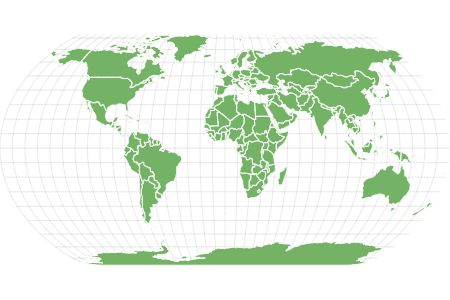Sea Spider
These animals breathe through their legs
Advertisement
Sea Spider Scientific Classification
Read our Complete Guide to Classification of Animals.
Sea Spider Conservation Status
Sea Spider Facts
- Prey
- Coral curstaceans
- Group Behavior
- Solitary
- Fun Fact
- These animals breathe through their legs
- Distinctive Feature
- 8 long legs
- Habitat
- Deep cold oceans
View all of the Sea Spider images!
Sea spiders are marine arthropods that belong to the class Pycnogonida. There are over 1300 known species that belong to this order, varying in sizes from 0.04 inches to 2.3 feet. They can be found at relatively shallower depths in the water, but larger ones can also live near the ocean floor. Despite what their name suggests, sea spiders are not true spiders or arachnids, but still, they are closer in classification to actual spiders than insects or crustaceans. Sea spiders, like true spiders, have eight legs.
5 Incredible Sea Spider Facts
- Sea spiders can move in all directions and are very flexible. They can swim forwards, backward, and even sideways.
- The egg-carrying organs of a sea spider, are called ovigers, and can also be used to clean themselves.
- Female sea spiders are larger than males.
- One species of sea spider, Ascorhynchus corderoi, are hermaphroditic, meaning they have both ovaries and testes.
- The mouthpiece of the sea spider is known as the proboscis, which allows them to suck the nutrients out of their prey.
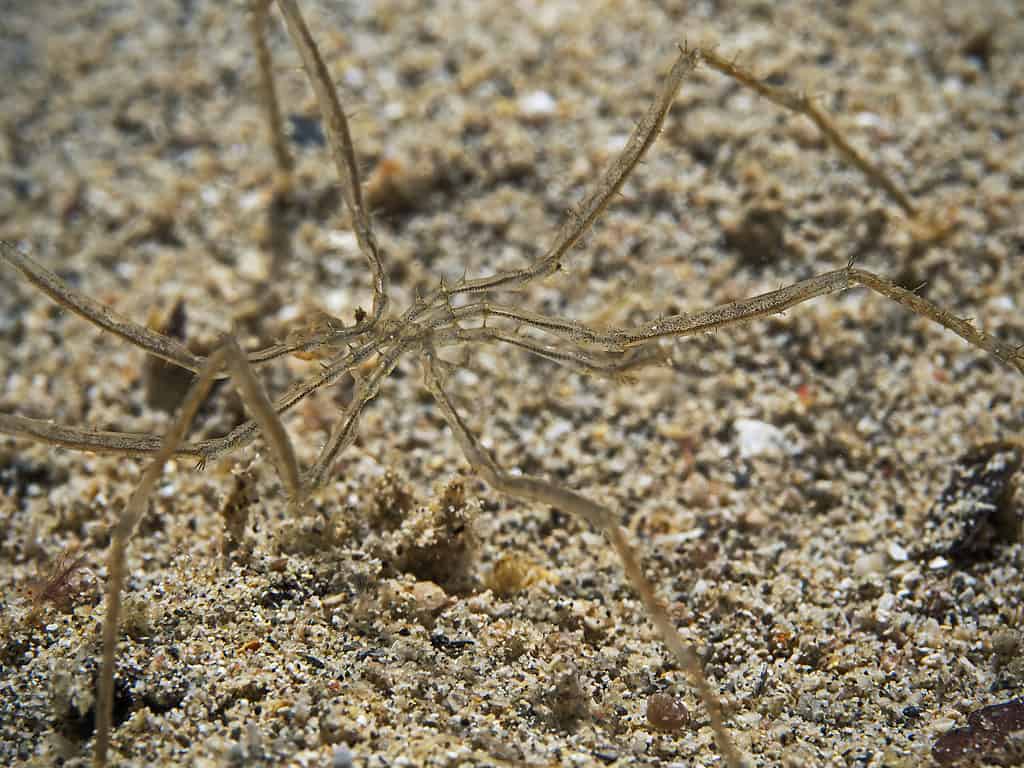
Sea spiders can can swim forwards, backward, and even sideways.
©iStock.com/scubaluna
Sea Spider Scientific Name
Scientific Name: Pantopoda
An order of marine arthropods, the sea spider’s class’s name Pycnogonida comes from the Greek word pyknos, which means thick or knobby. While not true spiders, these marine animals look very similar to spiders and have just as many legs. There are around 1300 species of this animal found worldwide, and they are split into 86 genera. Sea spiders were first discovered around 150 years ago, and scientists have been studying these fascinating marine animals ever since!
Sea Spider Appearance
Sea spiders are long-legged creatures with small bodies. They typically have eight legs, much like spiders. These legs are positioned around their small body. Depending on the species, some sea spiders may even have 10 or 12 legs. These legs have multiple joints that help the sea spider to move around and stand on the ocean floor.
An interesting fact about these animals is that the sea spider’s digestive tract extends into these long legs! Since sea spiders live within water bodies, they do not need a traditional respiratory system. Instead, they absorb and release gasses from their bodies by diffusion through their legs.
Their mouthpiece, called the proboscis, allows them to suck nutrients into their bodies down to the digestive system – all the way down their legs. The proboscis looks like a long tube with no jaw and no teeth.
The size of sea spiders can vary from species to species. Some sea spiders are so small they can barely be seen at 0.04 inches (or 1 mm) while others are as big as 2.3 feet (or 70 cm)!
They usually have four eyes that are located on the sides of their head, though some species might not have eyes depending on where they live in the ocean. They also have a pair of ovigers, which are like ovaries, as this is where they keep their eggs, but this part of their body is also used to groom themselves.
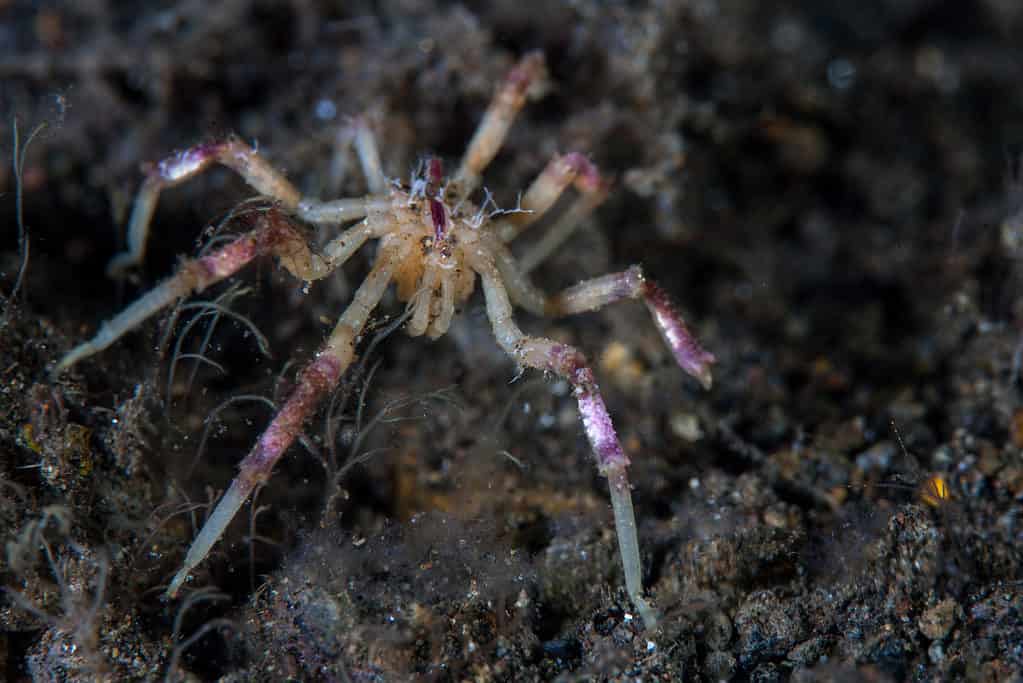
Sea spiders usually have four eyes that are located on the sides of their head.
©iStock.com/Velvetfish
Sea Spider Evolution and History
Sea spiders have been around since the Jurassic Period, and their fossils have been found in Sweden, Germany, and England. Although these fossils are scarce, they indicate that earlier sea spiders, belonging to the class Pycnogonida, had a coelom. The coelom was a body cavity in the bodies of sea spiders that surrounded their digestive tract and gave them a hydrostatic skeleton. Over the years, this cavity disappeared and altered the shapes of their bodies to be more compact. Some fossil samples also had a long trunk attached to the creature’s abdomen. This was thought to be a tail of sorts, which isn’t seen in sea spiders today. In total, 70 different fossils have been found so far, and each of them help fill the gaps in how the creature evolved over time.
Sea Spider Behavior
Not much is known about the behavior of sea spiders since they live in large water bodies and are hard to observe. They are solitary animals that do not live in groups. Instead, they crawl around anemones and coral. The longer-legged sea spiders tend to be better swimmers, but most sea spiders crawl around anemones and corals, feeding on slow-moving or unmoving prey.
Sea Spider Habitat
Sea spiders are largely found in shallow ocean waters, but they can also be found near ocean floors as deep as 20,000-25,000 feet. They can camouflage well to their environment around algae and corals, keeping them away from predators. Since these creatures are found in oceans worldwide, they can survive in all climates, from tropical and temperate to polar ice. If living in shallow waters, these marine arthropods are found near shores, hiding in seaweed. Most larger sea spider species tend to be found in these colder, deeper waters near Antarctica, in fact, 20% of all sea spiders are located there.
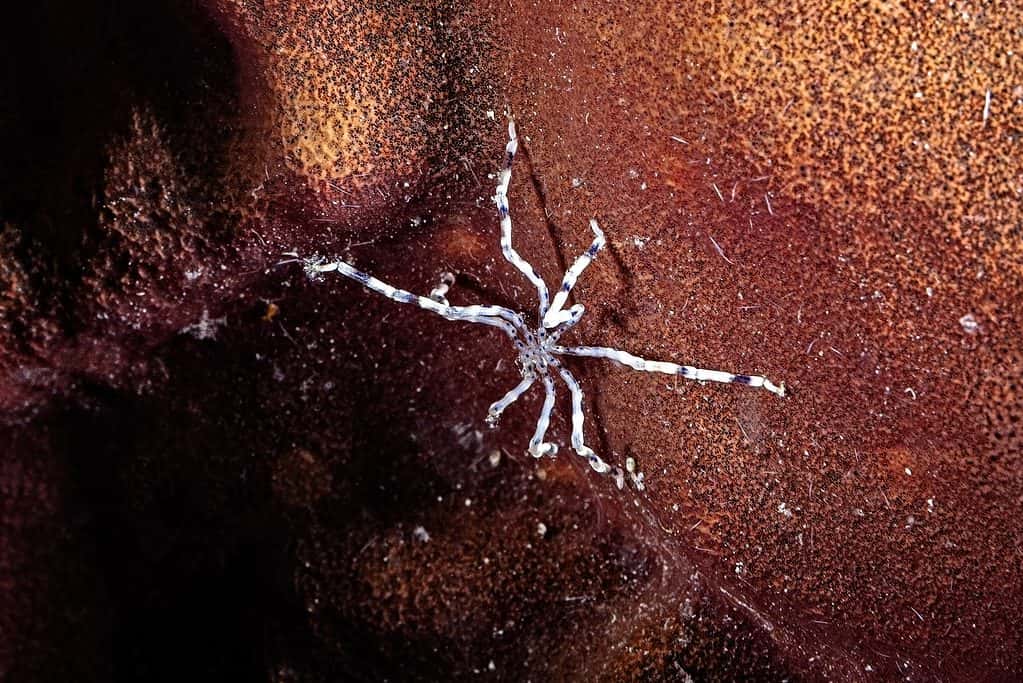
Sea spiders crawl around on coral feeding on slow-moving or unmoving prey.
©Harald Schottner/Shutterstock.com
Sea Spider Diet
Sea spiders are omnivorous creatures that feed on soft-bodied animals such as anemones, worms, jellies, sponges, soft corals, and nudibranchs.
What Eats The Sea Spider?
Any marine species that are larger than sea spiders can prey on them. This includes, but is not limited to, crabs, fish, and starfish.
What Does The Sea Spider Eat?
Sea spiders eat invertebrates that are found in the oceans, such as coral, clams, and marine worms. They feed by piercing the invertebrate first with their legs and then sucking them with their mouthpiece. They feed on the blood and juice of their prey to get all the nutrients they need to survive.
Sea Spider Predators and Threats
Sea spiders can be preyed on by several different marine species. This includes rayfish, crabs, sea stars, jellyfish, and other carnivorous or omnivorous creatures. However, sea spiders are often hard for predators to find since they can easily camouflage themselves and blend in with their surroundings. Other threats to their survival can include sudden changes in the marine ecosystem like the changing pH or temperatures of the ocean water.
Sea Spider Reproduction
The genitalia of sea spiders is located in their legs. The male sea spider climbs onto the females, and the two align their genital pores with one another. The female then releases her eggs which combine with the male sperm. This fertilization process occurs externally, and the male collects the eggs after the sperm has glued to the egg. The male then carries these eggs in the ovigers until they hatch. Prior to the mating act itself, the courtship of the males and females is relatively brief.
Most species of the sea spider have separate sexes, except one which is hermaphroditic, where both the ovaries and testes are located in the legs of a single spider, right below the digestive system.
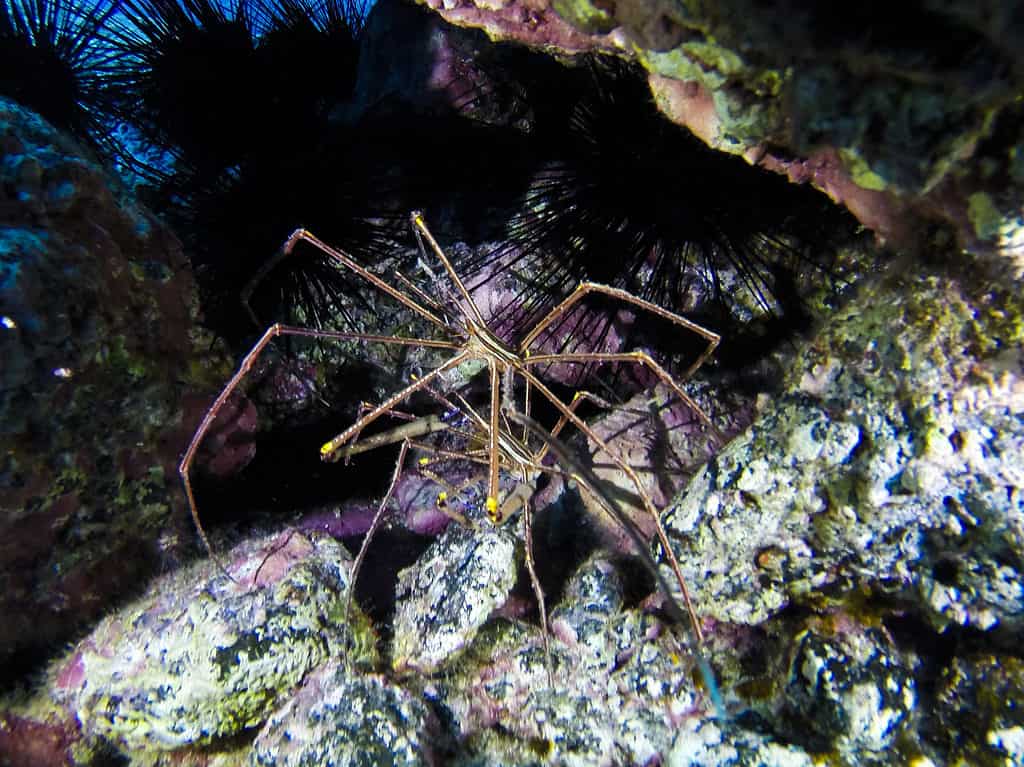
The genitalia of sea spiders is located in their legs so to reproduce the male sea spider climbs onto the female and they align their genital pores.
©iStock.com/simone tognon
Sea Spider Babies
Once hatched, sea spider babies emerge. They are known as larvae and begin molting until they develop into adults with fully-developed pairs of legs. After birth, they swim away from their male parent and live near coral or mollusks to feed until they grow. In some cases, they stay in the parent’s ovigers until they have grown legs and can go around independently. Only the male spider looks after their young.
Sea Spider Lifespan
Not much is known about the lifespan of a sea spider. But as they begin to age, their legs begin to wither and shorten before they die. They also resort to parasitic ways of feeding as they get older, so they don’t have to move around much to feed.
Sea Spider Population
The exact number of sea spiders all over the world is unknown. However, since they are found in almost all oceans worldwide, their conservation status is believed to be not endangered or threatened.
Similar Animals
View all 293 animals that start with SSea Spider FAQs (Frequently Asked Questions)
Are sea spiders carnivores, herbivores, or omnivores?
Sea spiders are omnivorous creatures that feed on soft-bodied animals such as anemones, worms, jellies, sponges, soft corals, and nudibranchs.
Is a sea spider really a type of spider?
Contrary to popular belief and what their name suggests, sea spiders aren’t actually spiders. But with that said, on average, they do have eight legs and look very similar to true spiders.
When did sea spiders first appear?
Based on fossil data, sea spiders have been around since the Jurassic period.
Do sea spiders have hearts?
Like other arthropods, sea spiders do have hearts, but they aren’t very strong.
Thank you for reading! Have some feedback for us? Contact the AZ Animals editorial team.
Sources
- Encyclopedia.com, Available here: https://www.encyclopedia.com/science/encyclopedias-almanacs-transcripts-and-maps/sea-spiders-pycnogonida
- Monteray Bay Aquarium, Available here: https://www.montereybayaquarium.org/animals/animals-a-to-z/sea-spider
- PetsonMom.com, Available here: https://animals.mom.com/reproduction-life-cycle-sea-spiders-2923.html

